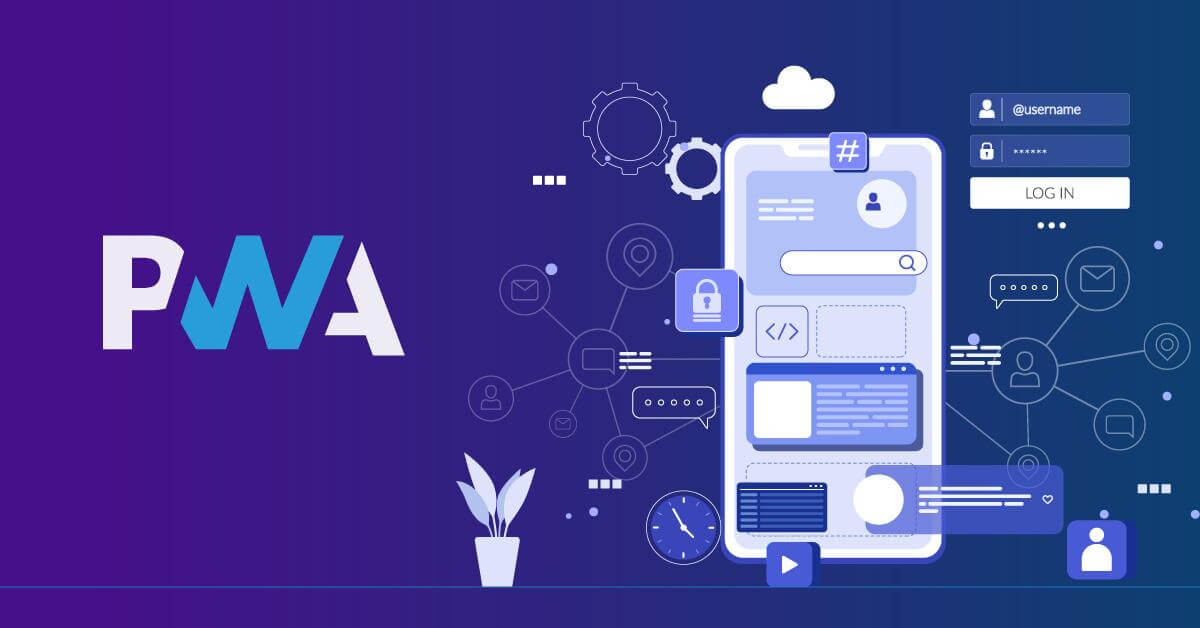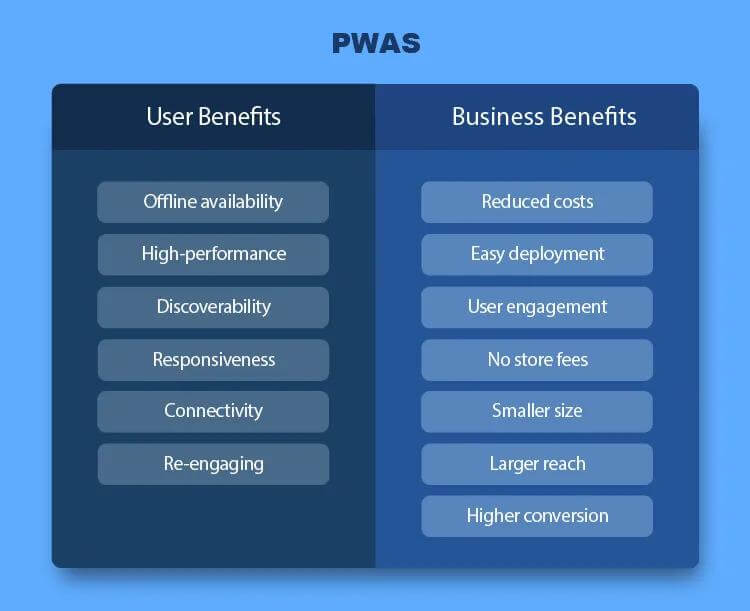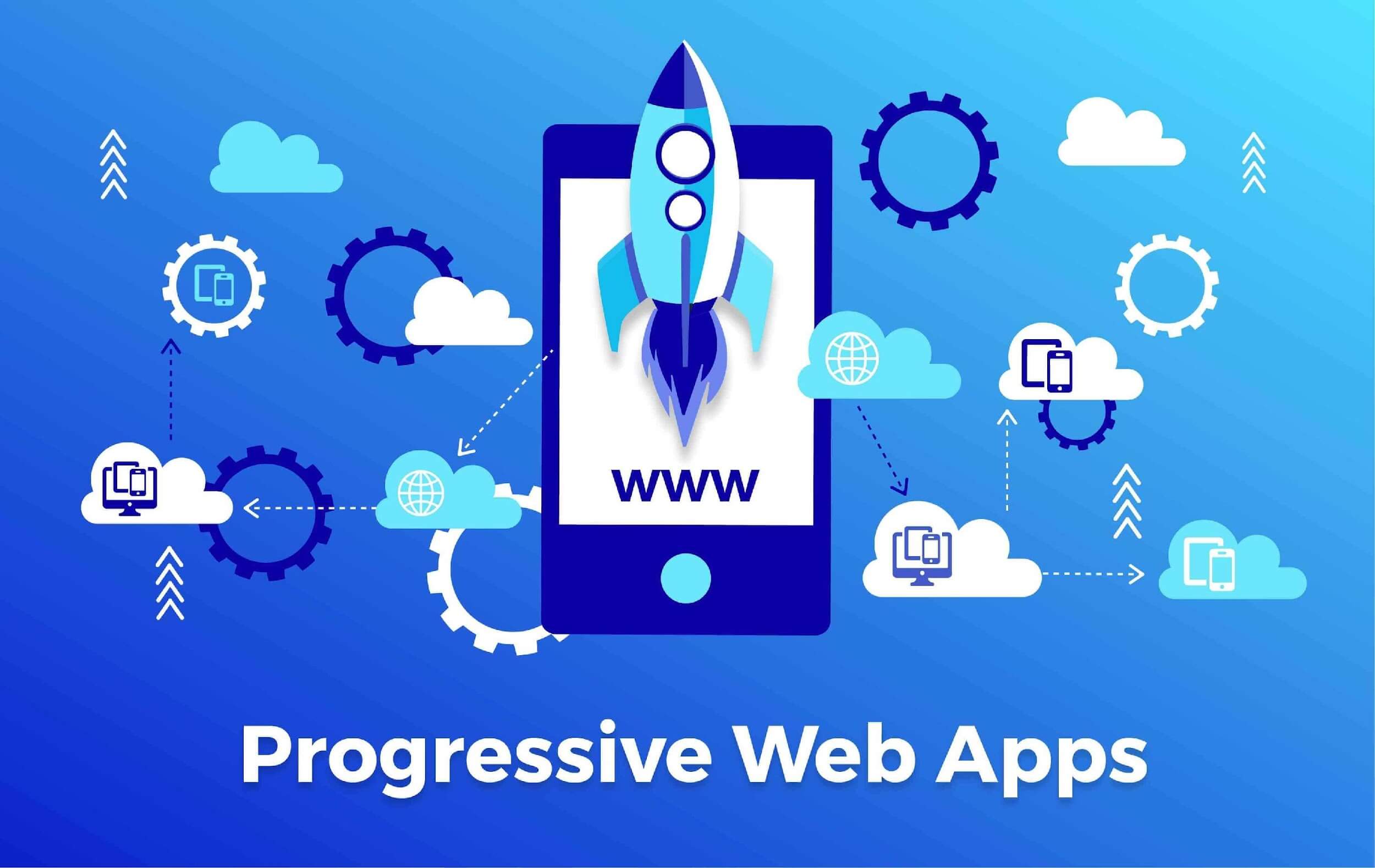In 2023, the variety and versatility of digital products is striking. Some 10–15 years ago, people would perform operations through web software. However, when smartphones appeared, they gave businesses an opportunity to interact with their customers through robust and high-performance apps. What’s more, operations became accessible at any time of the day and in any corner of the world. But as time passed, apps lost their appeal, and companies saw a considerable customer churn. The latter naturally resulted in decreased revenues. To deal with this issue, businesses are embracing progressive web apps. By 2027, their market is predicted to reach $10.77 billion.
Read this piece to learn about the latest progressive web app trends and the future of PWAs.
Contents
PWAs in a nutshell
These apps are essential for modern flexible companies and users as they offer a convenient hybrid experience. On the one hand, they are websites written in languages used for web development. And it’s quite natural that they have all the key features characteristic of this type of software. On the other hand, they possess the rich functionality of native mobile software, including enhanced customizability and offline support. PWAs are accessible through a web browser of any device, there is no need to download them from an app store. They show impeccable performance, impressive responsiveness, and pleasant UX.
The legendary Gmail, Google Docs, and Twitter are just some examples of such solutions. Their popularity is a solid proof of the efficiency and the bright future of PWA apps.

Key advantages of progressive web apps
There are many reasons behind the ever-growing popularity of these solutions. Here are the key ones:
- Enhanced UX
Users love these apps for push notifications, the ability to operate offline, and quick operations. They remind them of their favorite mobile software, with enhanced flexibility.
- Improved accessibility
Since you needn’t go to the app store to get these, you can reduce the number of steps needed to access a digital solution. Just open your web browser and use one.
- Lower expenses
A company can significantly save money when launching the development of a progressive web app. In comparison with native software, it is way cheaper.
- Perfect cross-platform performance
No matter what OS or browser you use, progressive web apps can run on any of them.
- Enhanced security
One of the progressive web app trends is the ever-increasing focus on security. These solutions have solid mechanisms of protection.

Current PWA trends
Numerous IT-specialists speculate on the future of PWA apps today. Such companies as Google, Microsoft, and Apple are at the forefront of development processes, others are gladly joining in. The following PWA trends are the most significant in 2023.
AI algorithms and voice support
Progressive web apps have seen a rise in the use of voice technology and AI algorithms widespread in conventional mobile and web software. So, it’s a natural step for IT providers engaged in offshore web development services to implement such features in progressive apps.
This is a powerful trend. Businesses will benefit from such innovations because embedding the above top-notch functions will result in improved customer engagement.
The spread of progressive web apps on mobile devices
The rising popularity of these products across smartphones and tablets is one more essential trend. With the ever-increasing mobile usage, businesses are competing to develop software that can provide customers with an app-like experience. At the same time, they consider the issues of compatibility across platforms. This will enable companies to ensure immersive multichannel experiences for their clients and grow their audiences.
Gesture recognition
Last but not least, the future of progressive web apps largely depends on motion-based UIs. These are poised to become a significant PWA trend in 2023. With advanced capabilities like gesture recognition now available for web platforms, visitors will no longer have to depend solely on clicks and taps for interactions. Now, using hands or body movements is enough for accurate navigation and control. Such an advancement means enhanced UX and comfort.

Examples of successful PWA implementation across industries
eCommerce
Companies that keep a watchful eye on the latest IT trends and believe in the future of progressive web apps strive to shift to them from mobile sites. When it comes to online shopping, enhancing the UX and boosting speed has a direct influence on the conversion rate. Compared to mobile sites, PWAs provide a much higher level of performance. The case of Alibaba (a 76% increase after implementation of this innovation) is a solid proof of the efficiency of this strategy.
Media
News portals don’t require the advanced mobile features as visitors want immediate access to quality content and a seamless UX. Here, the case of the Washington Post is eloquent. After adopting the new technology, they experienced an 88% improvement in content loading. Forbes is another industry leader that embraced this innovation. No doubt that in the future, more businesses will discover the benefits of this approach.
Marketplace
To book a hotel or a flight and order food, one needn’t download an app for each of these activities. So, innovative software is a good choice for companies providing such services. They can see an impressive conversion rate (up to 95% in certain cases) and considerably cut down the page load time. So, the future of PWAs is undeniable in such industries as hospitality, passenger flights, and so on.

The future of progressive web apps: are they relevant in 2023?
Of course, they are, especially if you want your product to enter the market in the shortest possible time and be available on various platforms with a single codebase. PWAs help emerging businesses to create and deploy their software, reducing the time and cost required to launch a digital solution. This is essential since startups usually have limited resources. Well-designed push notifications and banners attract people and increase their engagement. So, with such apps, firms can successfully implement even the boldest marketing strategies.
Large and mid-range companies find these digital products useful. They help people who lack stable access to high-performance platforms discover the benefits of modern enterprise software.
These are also efficient in scenarios where your digital solution needs to support offline mode or if you need to convert your legacy web platform, built with technologies such as React, into a PWA. This is a faster option compared to developing an entirely new app in Flutter for Web.
Conclusion
As we see from the current trends in the industry, the future of PWAs is promising. They are revolutionizing the way we use web products. Offline support, similarity to native solutions, and enhanced speed and performance boost their popularity among companies and common users. As web technology advances, it’s clear that PWAs will play a vital role in the whole IT sector. Their flexibility and convenience are astonishing, that’s why they are highly likely to become the go-to choice for businesses that strive to create engaging, user-friendly and scalable web products.
We can expect to see continued growth in this exciting area in the years to come. So, if your company hasn’t yet developed such a product, it’s high time you started working on one. Be sure it will bring you success and happy customers.


